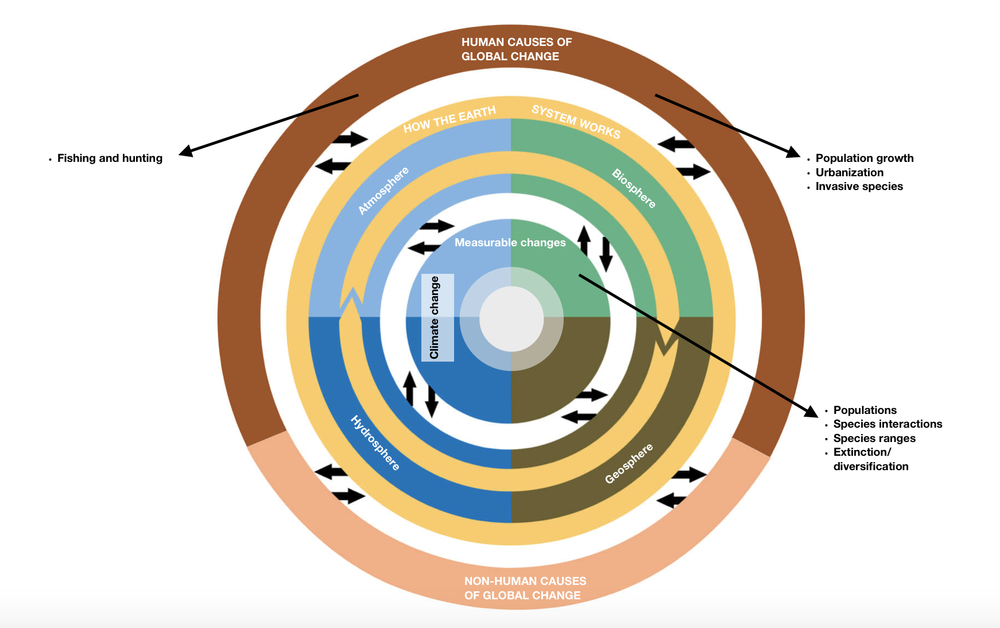
All Solutions
Page 168: Assessment
Therefore, the factor that does not contribute to exponential growth is reduced resources.
a. Phase I: The population size grows very fast.
b. Phase II: The population growth slowly decreases due to limited resources.
c. Phase III: The population size stops growing since it has reached the carrying capacity.
Therefore, if a country’s population grows exponentially, this means that it is still in the process of going through the initial stages of the demographic transition.
On the other hand, the population in the United States consists of nearly equal numbers of people in the different age groups. This indicates a slow and steady population growth in the near future. In addition, the greatest percentage is in the working age group. This pattern is influenced by the immigrant population in the United States.
Increasing the life expectancy of people can be met through improvements in housing, healthcare, and sanitation. Moreover, a decrease in birthrate is associated with population control laws, proper education, good lifestyle choices, and a high cost of living.

B. Populations, species ranges, species interaction, and extinction/diversification: These icons are placed under the measurable changes seen in the biosphere.
The predator-prey and herbivore-plant relationships, which occur between sea otters, sea urchins, and the kelp forests, help keep the balance in the ecosystem. These interactions regulate or control a population size by preventing some organisms from becoming excessively abundant.
In order to model these conditions, the aquarium must be able to hold around 100 fishes of different species, wherein some species would exhibit a predator-prey relationship. The availability of resources must be kept at a certain level that would trigger competition among the organisms.
To know how abiotic components would limit the population, the temperature of the water in the aquarium must be changed from time to time. The aquarium must be exposed to sunlight during the day. To model how nutrient levels in the water can affect the population, nitrogen and phosphorus can be added into the water to help in the growth of green algae. In turn, the concentration of dissolved oxygen can be influenced by the plant growth in the aquarium.
In the year 1970, the rabbit population peaked again. This led for another control measure to be introduced. During this time, rabbit fleas caused the population to decline.
After several years, rabbits developed a resistance against this disease and begin to multiply rapidly. To stop the population growth, RHD is introduced. RHD, which means rabbit hemorrhagic disease, is caused by a virus that affects rabbits. As a result, the population growth decreased.
This event explains how a density-dependent limiting factor, such as diseases and parasitism, works in controlling the population growth. Once the population became dense, the disease has spread quickly and caused the population to decline dramatically. Since the rabbits are very low in number, the limiting factor does not strongly affect the small population anymore. This event has helped the population size to grow.
Overall, this transition is said to be an indication that the economic development of a country and its population growth are related to each other. Most of us can observe that a country that is industrialized has high standards of living and a slow, steady population growth. On the other hand, a country that has not gone through the demographic transition has low standards of living and a population that grows at a faster rate.
1. Identify the biotic and abiotic factors that affect the growth of algae in an aquatic environment.
2. Determine the role of algae in the pond ecosystem’s food web.
3. Determine the relationship between the photosynthesis and the productivity of algae. Place one beaker in a place that is exposed to sunlight and put the other one in a room that is not exposed to sunlight. Leave the two beakers for five days and observe the changes in growth and color. Determine the algal growth in high light and low light.
4. Determine the relationship between the temperature and the productivity of algae. Place the three beakers in three rooms that have different temperatures: room temperature, 30 degrees Celsius and 5 degrees Celsius. After 5 days, observe the algal growth in the three beakers. Determine the algal growth in high temperature, low temperature, and room temperature. Observe the changes in terms of the color of the algae.
5. Determine the relationship between the nutrient level in the water and the productivity of algae. Prepare two beakers. In the first beaker, add a low concentration of nitrogen and phosphorus. On the second beaker, add a high concentration of nitrogen and phosphorus. After 5 days, observe the algal growth by comparing the color of the water inside the beaker.
6. Determine the relationship between the dissolved gases in the water and the productivity of algae. Prepare two beakers and cover one of them. Ensure that no air can penetrate inside the covered beaker. Place the two beakers at a windowsill, outside the room, or anywhere where they can be exposed to sunlight and air. After 5 days, observe the algal growth by comparing the color of the water inside the beaker.

